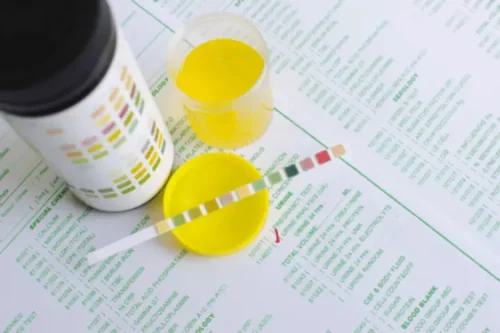
With dedication and support, it’s possible to achieve sobriety and lead a fulfilling life free from alcohol dependence. In the second stage, individuals start to develop a higher tolerance, requiring more alcohol to feel its effects. This leads to increased alcohol consumption and cravings, as well as a greater risk of binge drinking, and can be considered a moderate case of alcohol abuse. Your health may decline rapidly, as your essential organs become compromised. Drinking now becomes a relentless necessity, done to stave off severe withdrawal symptoms. You may experience a pronounced loss of control over your drinking habits, meaning that you’re completely dependent on alcohol.
- Advances in the field have led to a variety of treatment methods, as noted by the National Institute on Alcohol Abuse and Alcoholism (NIAAA).
- These plans often include detoxification, medication, therapy, and support for co-occurring mental health conditions.
- Studies have found that children of alcoholic parents are more likely to develop alcoholism themselves, suggesting a genetic link.
- As increased drinking continues, you become more dependent on alcohol and are at risk of developing alcoholism.
- Social factors such as peer influence, binge drinking culture, and racial obstacles have also been identified as contributors to the onset of alcohol abuse and dependence.
I’m Seeking Help
This stage is often noticed by loved ones when they see the addicted person’s attempts to try to hide their drinking problem. This is problematic because it demonstrates that alcohol is being used as a coping mechanism. It is important to mention that a person who is in this stage will have already built up a tolerance to alcohol, so it will take more alcoholic beverages for them to begin to feel intoxicated. Alcohol dependence also means that you have developed a tolerance to drinking. As a result, you may have to drink larger quantities to get “buzzed” or drunk. AddictionResource aims to present the most accurate, trustworthy, and up-to-date medical content to our readers.

How Are the Stages of Alcoholism and Alcohol Use Disorder DSM-5 Criteria Different?
Remember, seeking help and recovery is a courageous step towards overcoming alcoholism. There are numerous resources available, including helplines, treatment centers, and online support groups. By reaching out and taking advantage of these resources, individuals can embark on a journey towards a healthier and alcohol-free life. Individual counseling and therapy can be highly beneficial for individuals dealing with alcoholism. Therapists can help individuals explore the underlying causes of their addiction, develop coping strategies, and address any co-occurring mental health issues that may contribute to alcoholism. Seeking professional help and support is crucial for individuals in the late stage of alcoholism.
Unveil the impact of inadequate substance use prevention on teens: Are we failing to reach the next generation?
Yes, effective treatment options for early-stage alcoholism include behavioral therapies and support groups. Because this stage does not involve physical dependence, rehabilitation may not be necessary. These programs help individuals safely and comfortably withdraw from alcohol while managing potential withdrawal symptoms. Medical supervision and support are crucial during this stage to ensure safety and minimize discomfort.
- It’s important to note that these symptoms can vary widely among individuals.
- Recovery from alcoholism is a difficult journey that may involve setbacks or relapses along the way.
- It’s crucial for individuals in the late-alcoholic stage to seek professional help and support.
- Alcoholism is a dangerous and life-altering disease that can seriously affect your health and well-being.
- However, clinical guidelines often discourage treating mental health conditions in individuals who are actively drinking or recently abstinent, which can delay the provision of effective treatments.
- There are over 3 million cases of alcoholism (alcohol use disorder) diagnosed in the United States each year.
Instead, the proper diagnostic term for alcohol addiction is alcohol use disorder. These medicines can help reduce the negative side effects of detoxification and withdrawal. The primary symptoms of stage four include all-consuming alcohol use, health problems, and dangerous withdrawal symptoms. five stages of drinking End-stage alcoholism, also known as late-stage alcoholism, is the most severe. There are different types of alcoholics, alcoholic personalities, and tolerances, but the health effects are the same, especially long-term. Prolonged and heavy alcohol consumption permanently changes brain chemistry.

Treatment for Middle-Stage Alcoholism
There are over 3 million cases of alcoholism (alcohol use disorder) diagnosed in the United States each year. The National Institute on Alcohol Abuse and Alcoholism states that at least 88,000 deaths occur annually as a direct result of alcohol abuse. Individuals are on the brink of alcohol use disorder, with drinking firmly rooted in their daily routines. Despite awareness of the adverse effects, there is a struggle to abstain from alcohol.

In social situations, they may be unable to stop drinking when others do and find that they can’t handle as much as they previously could without becoming drunk. Blackout episodes, where the individual does not remember what they’ve said or done while drinking, may occur. Even though alcohol has become a significant part of everyday life, early-stage alcoholics often deny that they have a problem and may be defensive about their drinking. They may also rationalize, or make excuses, for their behavior and insist they can stop drinking whenever they feel like it. As the disease becomes more severe, blackouts and loss of control can happen.

As alcohol use disorder (AUD) doesn’t progress overnight, read on to learn about the stages of alcohol addiction, how to recognize them, and the steps you can take to intervene effectively. The journey from casual drinker to end-stage alcoholism is one that’s complex and unique to each person. Here, we discuss each stage of alcoholism, highlighting the pathway people take as their drinking progressively gets worse. No matter the stage of the disease, if you or someone you love is struggling with alcohol addiction, seek professional help to achieve the benefits of quitting alcohol and learn how to live a healthier life. Late-stage alcoholics can get better if they seek treatment, and some of their health problems can even be reversed if caught early enough. The end-stage alcoholic suffers from a host of physical problems, including severe damage to vital organs such as the liver.
If The Recovery Village is not the right fit for you or your loved one, we will help refer you to a facility that is. The Diagnostic and Statistical Manual of Mental Disorders, Fifth Edition, Text Revision (DSM-5-TR) refers to this as moderate AUD. In moderate AUD, a person shows signs of four to five of the symptoms of AUD. Blacking out from drinking too much is a warning sign of this stage, along with lying about drinking, drinking excessively, and thinking obsessively about drinking.
- The damage to the brain is often the most severe because alcoholism can lead to strokes, dementia, seizures, and other neurological conditions.
- Over time, repeated alcohol exposure also alters a person’s brain chemistry.
- Treatment options may include detoxification, psychotherapy, counseling, and, in some cases, medication to manage withdrawal symptoms and support long-term sobriety.
- In this stage, an individual can feel they have lost control over their alcohol consumption.
- The impact of chronic alcoholism is not limited to physical health; it also encompasses psychological distress, social isolation, and deteriorating relationships.
